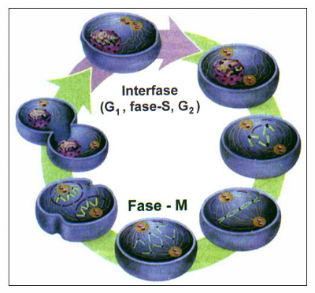Hormones are substances produced by the so-called glands endocrine. These glands produce secretions that are released directly into the bloodstream. In our body, these glands together form the so-called endocrine system.
Next, we will know the main endocrine glands and their hormones:
→ Hypothalamus
Prolactin inhibitory factor (PIF) - Inhibits the production of prolactin by the pituitary;
Corticotrophin-releasing hormone (CRH) – Stimulates the release of adrenocorticotropic hormone;
Thyrotrophin Releasing Hormone (TRH) – Stimulates the secretion of thyrostimulating hormone;
Gonadotropin releasing hormone (GnRH) – Stimulates the release of follicle stimulating and luteinizing hormones;
Growth hormone releasing hormone (GHRH) – Stimulates growth hormone secretion;
Oxytocin or oxytocin - It stimulates the contraction of the uterus and the expulsion of milk. This hormone, despite being synthesized in the hypothalamus, is stored in the portion of the pituitary called the neurohypophysis;
Vasopressin or antidiuretic hormone (ADH)
– Promotes water reabsorption by the kidneys. Like oxytocin, this hormone, after synthesis, is stored in the neurohypophysis.→ Hypophysis or pituitary gland
Adrenocorticotropic hormone (ACTH) - Stimulates the release of hormones from the adrenal cortex;
Growing hormone (GH) - Promotes the development of bones and cartilage, accelerating the growth of the organism;
Follicle Stimulating Hormone (FSH) - It promotes spermatogenesis in men and, in women, stimulates the growth of ovarian follicles;
Luteinizing Hormone (LH) - In men, it stimulates the production of testosterone and, in women, r acts on the maturation of the ovarian follicle and ovulation;
Do not stop now... There's more after the advertising ;)
Thyrostimulating Hormone (TSH) - Stimulates secretion of thyroid hormones;
prolactin – Stimulates milk production in the mammary glands.
→ Pineal gland
melatonin – It acts mainly by regulating sleep, but it has immunomodulatory, anti-inflammatory, antitumor and antioxidant functions.
calcitonin – Decreases blood calcium levels. It has an action contrary to that of parathyroid hormone;
Thyroxine - It acts on metabolism and cellular respiration;
Tri-iodothyronine – It acts on metabolism and cellular respiration.
→ parathyroid
Parathormone - Increases blood calcium level. It has an action contrary to that of calcitonin.
→ adrenals
- Adrenal cortex
Aldosterone – Promotes sodium reabsorption, ensuring electrolyte balance;
Cortisol – It causes an increase in blood glucose concentration and in the mobilization of amino acids from skeletal muscle to the liver.
- adrenal medulla
Adrenaline – Promotes cardiac stimulation and increased blood glucose levels;
noradrenaline – It acts mainly as a vasoconstrictor.
Insulin – Increases glucose uptake by cells, glycogen synthesis and stimulates protein synthesis;
glucagon – Promotes gluconeogenesis (glucose synthesis) in the liver.
Testosterone – Promotes the development of male sexual characteristics and stimulates spermatogenesis.
estrogen – Promotes the development of female sexual characteristics and the enlargement of the endometrium.
progesterone – Promotes the development of female sexual characteristics and ensures the maintenance of the endometrium.
By Ma. Vanessa dos Santos
Would you like to reference this text in a school or academic work? Look:
SANTOS, Vanessa Sardinha dos. "Major endocrine glands and their hormones"; Brazil School. Available in: https://brasilescola.uol.com.br/biologia/principais-glandulas-endocrinas-seus-hormonios.htm. Accessed on June 27, 2021.



